See the Flinders Ranges in luxe style at Arkaba Conservancy
A luxury stay in the Flinders Ranges exposes guests to millions of years of history.
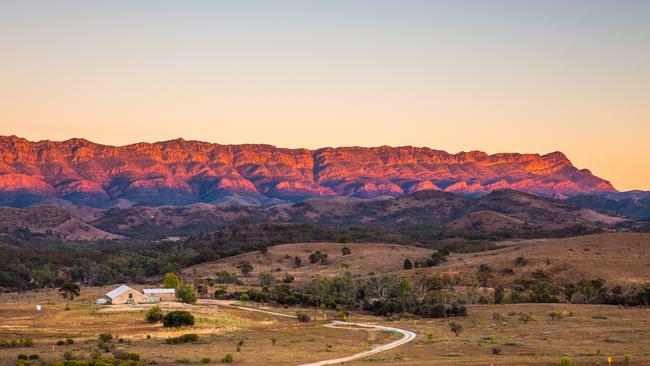
Lying in the sand of the dry creek bed of Brachina Gorge is a shiny pupal case, about 7cm long and the colour of golden syrup. Guide Hannah Agnew-Elliott picks it up and excitedly declares: “It must be going to rain”. The translucent shell belongs to an insect blessed with crystal-ball powers. The rain moth emerges from the ground only when the weather is about to change; its furry dark wings are specially designed to repel water droplets. Its presence in South Australia’s arid Flinders Ranges is fleeting, especially given native birds and possums consider it a tasty snack.
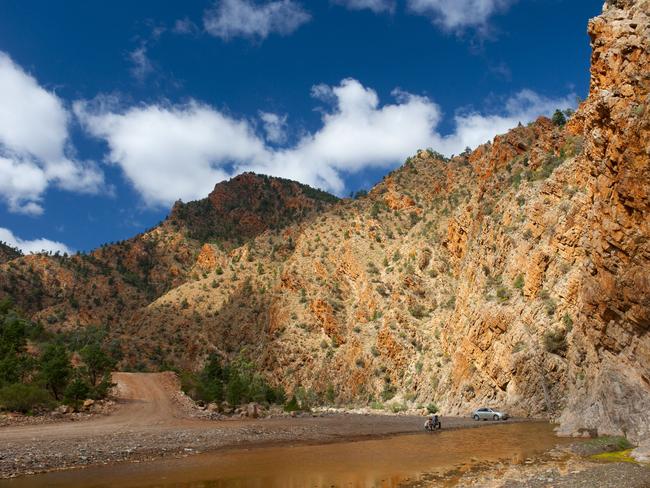
We’ve come to Brachina from Arkaba Conservancy, a Wild Bush Luxury property watched over by the majestic Elder Range. The gorge, part of Ikara-Flinders Ranges National Park, is a geologist’s paradise, taking visitors through 130 million years of the Earth’s history. Layers of rust-coloured rock lie at 45-degree angles, like books that have slipped sideways on a shelf. In places, the folds of time are so neatly pressed together they remind me of the ribbed gullet of a humpback whale. It’s perhaps not so silly an analogy considering 450 million years ago, the Flinders and half of what would become South Australia were covered by the Adelaidean Sea.
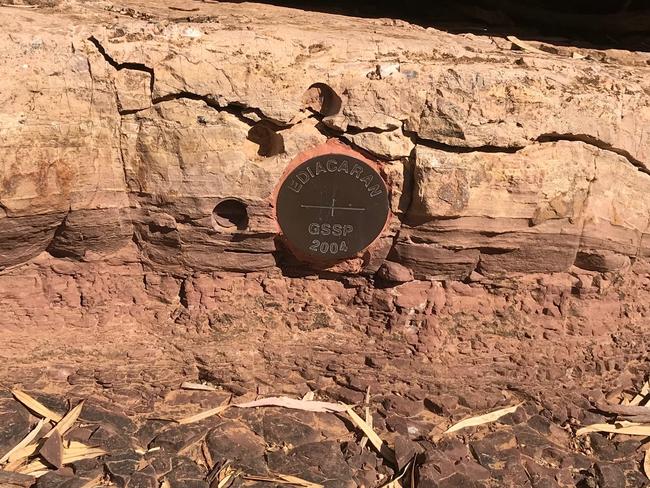
At a seemingly innocuous spot beside the creek, a small brass plaque is pressed into the pink dolomite and pale limestone layered above it. Here is something quite extraordinary. The prized “golden spike” was discovered in 2004 and is the only one of its kind in the southern hemisphere. It marks the geological start of the Ediacaran period, in essence the beginning of multi-cellular life on Earth.
We should be admiring all these rocks but instead our necks are craned towards the giant river red gums, some of which have 200 years of history written in their elaborate bark and burls. Colourful birds are nattering away up in the twisted branches, and the twitchers in our group are all aflutter. Australian red-rumped and ring-neck parrots are common in these parts (whoever said “blue and green should never be seen” sure got that wrong; they are stunning birds), as are galahs and corellas, which wheel in great flocks before engulfing a single tree. We see wedge-tailed eagles soaring high on the hunt and trios of emus pacing through the acacia scrub.
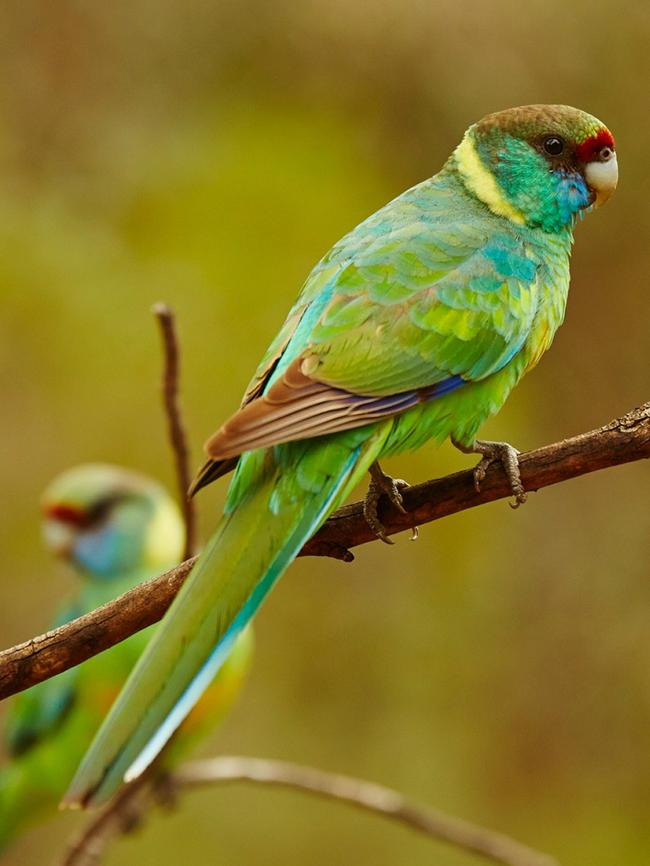
Throughout our tour of the 20km gorge, we scan the cliffs for the elusive yellow-footed rock wallaby. No such luck. Instead, we see several clusters of feral goats, which have proliferated since the 1940s, no thanks to the dingo fence further north that has kept the canine predators at bay.
It’s the presence of these feral pests, along with cats, foxes and rabbits and the impact of 150 years of sheep farming, that motivated entrepreneur Charles Carlow to buy Arkaba in 2009 and embark on a grand-scale regeneration and rewilding project. In the years since, about 400 cats, a similar number of foxes and thousands of goats have been removed from the 24,000ha property. Fences are being laboriously pulled down, weeds eradicated and native flora, including grasses, wattle and saltbush, are regenerating.
And the locals seem to like it. Alongside birds, wallaroos, with their oversized radar ears, are abundant, as are grey kangaroos, and staff have noted increased sightings of short-beaked echidnas. Western quolls and brush-tailed possums are also on the rise.
Wild Bush Luxury (and the Maria Island Walk) was sold in April to adventure company Experience Co for $5.3m. Carlow has joined the new owners as general manager of the company he founded, and conservation work will continue. As Agnew-Elliott says during a stroll to the property’s recently installed bird hide, conservationists can’t turn back time. It’s about restoration, she says as she attaches a motion-sensor camera to a tree to monitor visiting wildlife.
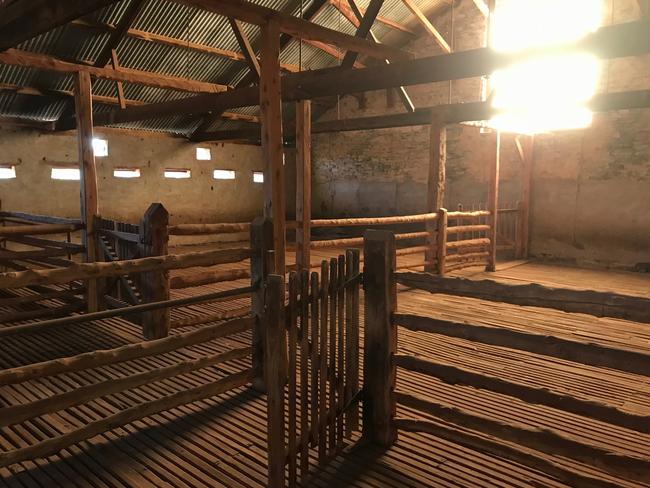
Not that the past is being erased. A short drive from the stately 1851 homestead, where a maximum 10 guests are accommodated in rustic-chic luxury, stands the old woolshed, which could churn through 30,000 sheep in a shearing season. Inside, the smell of lanolin hangs in the air like a memory. Sunshine streams on to the slatted timber floor and chunky oregon pine beams shipped from the US. Etched into the stone walls outside are the cursive signatures of shearers long gone. One of my fellow guests is a relative of the Bartholomaeus family, which owned Arkaba from 1901 to 1984. Remarkably, he discovers his ancestors’ surname among those scratched into the bluestone. There are so many layers of history in this ancient land.
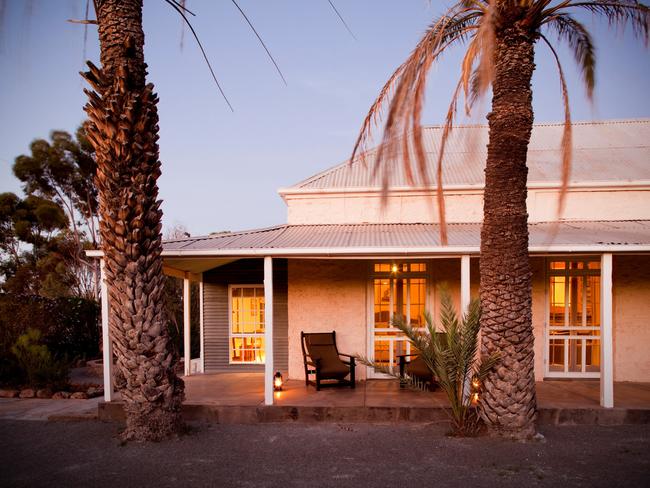
The name Arkaba is derived from the Indigenous word akapa, meaning underground or hidden water. Indeed, in the apparently dry creek bed below the homestead, a spring trickles from deep within the gravel, providing a precious resource for animals and humans. The Adnyamathanha people have lived in these parts for tens of thousands of years, trading ochre, stones, shells and the mild narcotic pituri. Ikara, the native word for the Wilpena, translates as meeting place, and among the important sites here are canyons adorned with rock art that dates back 5000 years.
My accommodation is significantly younger. The homestead’s quaint stone coach house is a self-contained couple’s retreat just a skip through freshly landscaped gardens to the main house. Meals are served either outdoors, weather permitting, or in the conservatory. Chef Luke Smith and his team whip up wonders such as baked spatchcock with jerusalem artichoke chips, pistachio mille-feuille with desert lime curd and heavenly breakfast waffles dotted with custard and berries.
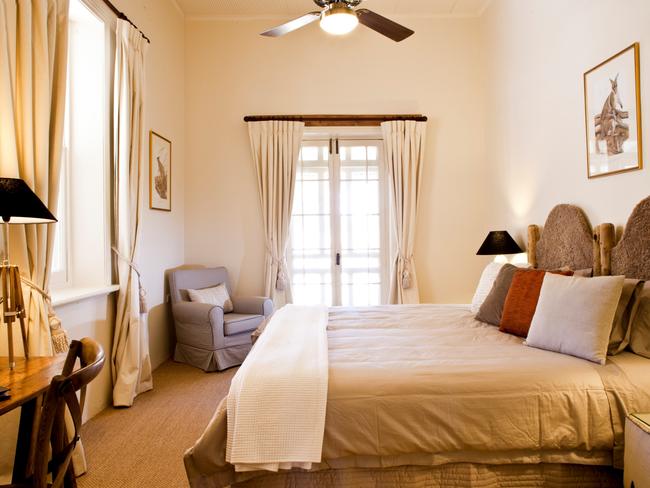
Replete from lunch one afternoon, I’m tempted to pour a glass of wine from the help-yourself bar and curl up by the fire in the library, but one of SA’s most spectacular landmarks is calling me: Wilpena Pound.
I drive past the blunt facade of Rawnsley Bluff into the national park. The 7.5km-return Wangarra trail ambles beside a creek, up to a historic homestead once owned by the Hill farming clan, before rising to two viewpoints. The sun is sinking low and a brisk gale is blowing as I clamber up the second lookout. A vast natural amphitheatre, 17km long and 8km wide, sinks beneath the eucalypts dancing wildly in the wind before me, ringed on all sides by ragged mountains. There’s not another soul in sight. It feels sacred, timeless.
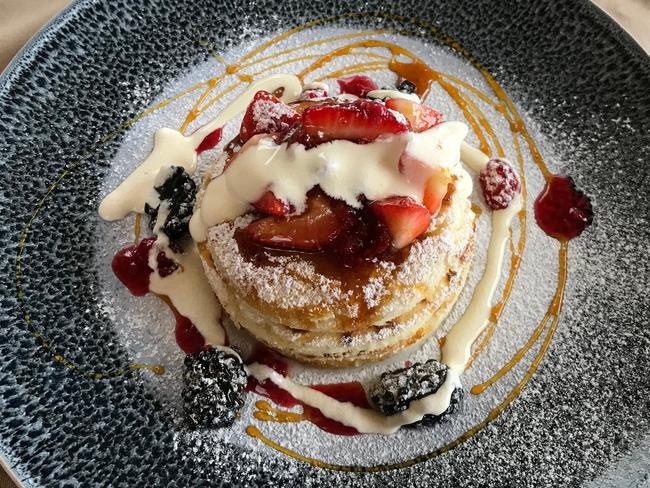
Overnight, the wind howls around the homestead as though trying to rip the roof off. And then the rain arrives, big fat drops hammering on the corrugated iron. Water is transformational in these parts. The previous downpour occurred on Australia Day, when a mere 60ml turned the creeks into tumbling rivers that tossed the trunks of river gums around like toys. Debris is still strewn around the banks. Only 10ml of rain registers this time, but it’s enough to turn the red Flinders dirt to sludge. In the morning, I trek up so-called “Telstra hill”, the most likely spot nearby for a mobile signal, to call home. By the time I return my boots are caked in mud and I am soaked. The rain moths predicted correctly but they are being as elusive as the rock wallabies. Guests converge on the conservatory to wait out the inclement weather, sipping hot lattes and playing fiercely contested games of Bananagrams.
On the day of my departure I’m woken by the glare of the (almost) supermoon blazing through my window. The lunar alarm clock is timely; we have an early start. As the heavens turn from grey to mauve to pastel pink, we pile into Arkaba’s Land Cruiser, blankets on laps and beanies pulled low over cold ears. Agnew-Elliott drives us expertly over the rough terrain, pointing out wallaroos as we grind up a white-knuckle ridge and stop. Flasks of hot tea and coffee appear. There are mountains in all directions, silhouetted against the sky. We stand waiting for Earth’s great light show and as the sun peeks through distant clouds, the ancient contours of the magnificent Elder Range are revealed in all their glory.
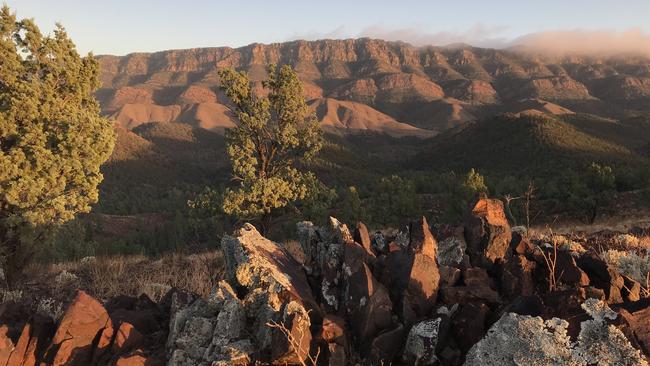
In the know
Arkaba Conservancy is about five hours’ drive from Adelaide. Road and air transfers are available. Accommodation, including all meals, beverages and daily activities, from $1070 an adult a night, twin-share (miniumum two nights); $1605 a night for solo travellers. Stay four nights and receive 25 per cent off until August 31. Optional experiences include scenic flights over Wilpena Pound and air safaris to Lake Eyre.
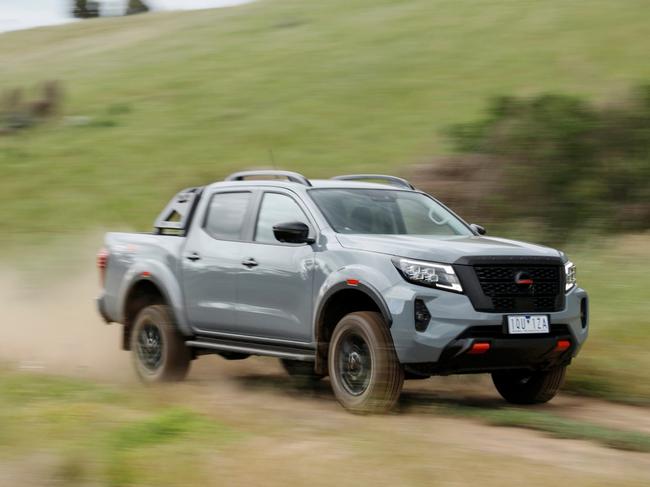
More to the story
Driving to one of Australia’s most rugged landscapes requires a suitably rugged rig, and the muscular black Nissan Navara PRO-4X looks the part. The dual-cab 2.3-litre pickup engulfs me in its dark leather-trim seats and I’m soon zooming out of Adelaide, past the strange salt-lake monster sculpture of Lochiel, towards the Flinders Ranges. It’s not a difficult journey – bitumen all the way – but I get a chance to hit the gravel in the national park. It would be fun to test the vehicle’s 4WD credentials on some of the vertiginous rocky inclines of Arkaba Conservancy but I lack the courage, and probably the skill. I am, however, extremely grateful for the car’s hefty proportions when a pair of grey roos loom roadside in the early-evening gloom before bounding directly in front of the bonnet. I brake, and miss them by a whisker.
From $60,630.
Penny Hunter was a guest of Arkaba Conservancy, Nissan and South Australia Tourism Commission.


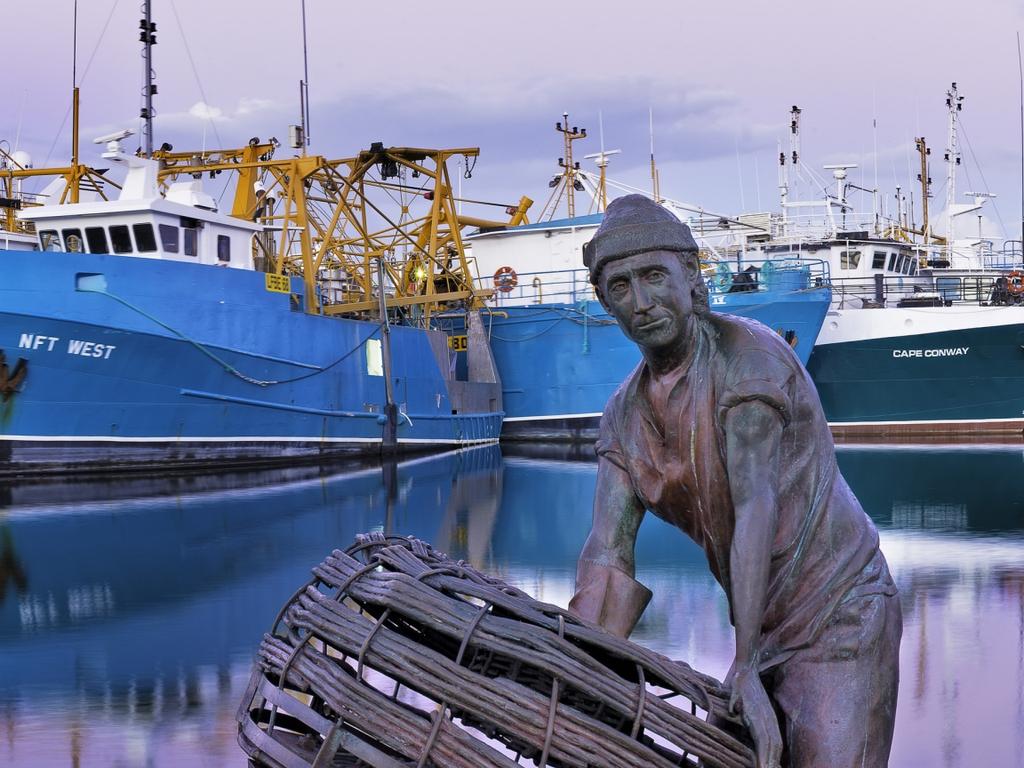
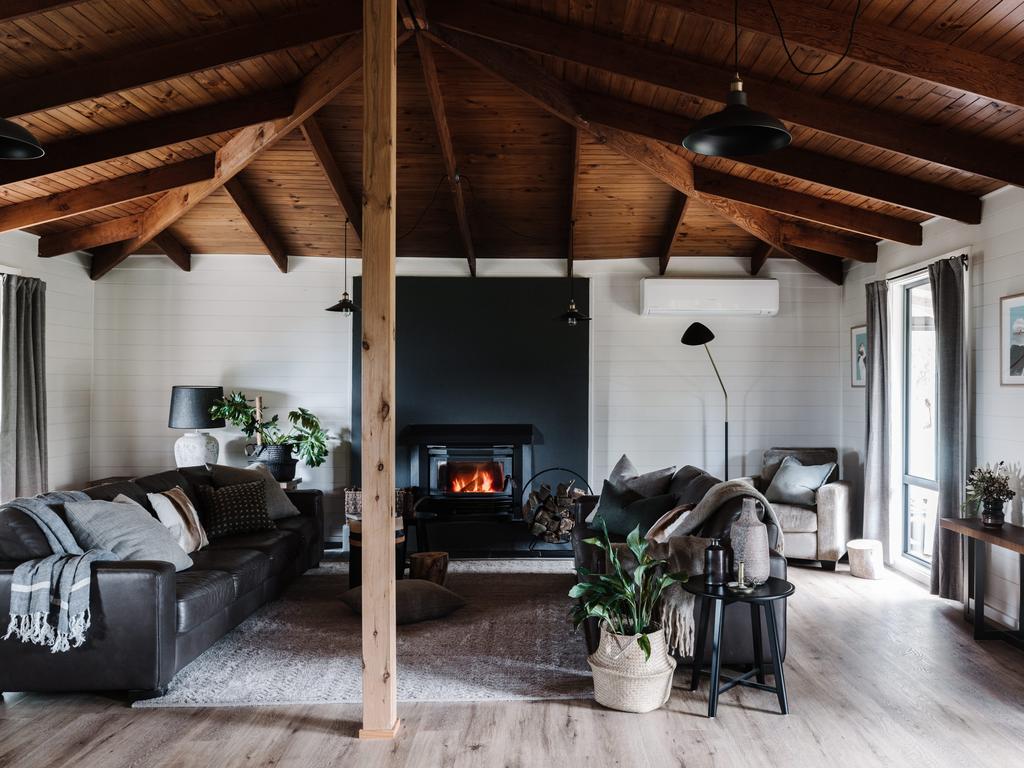
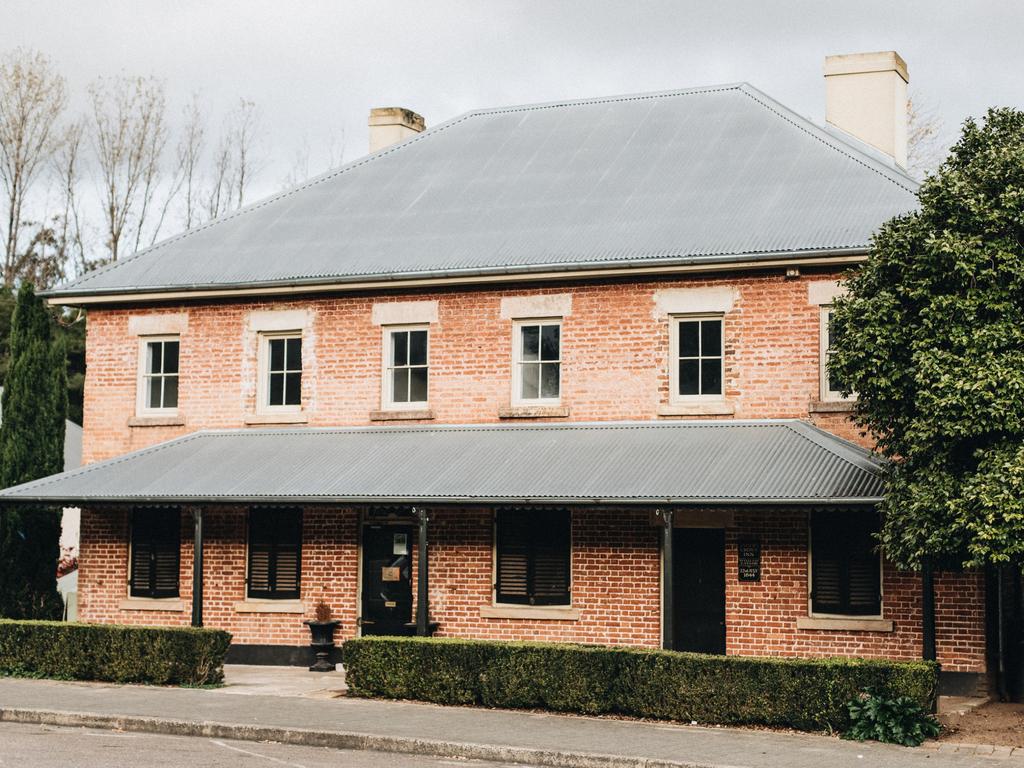
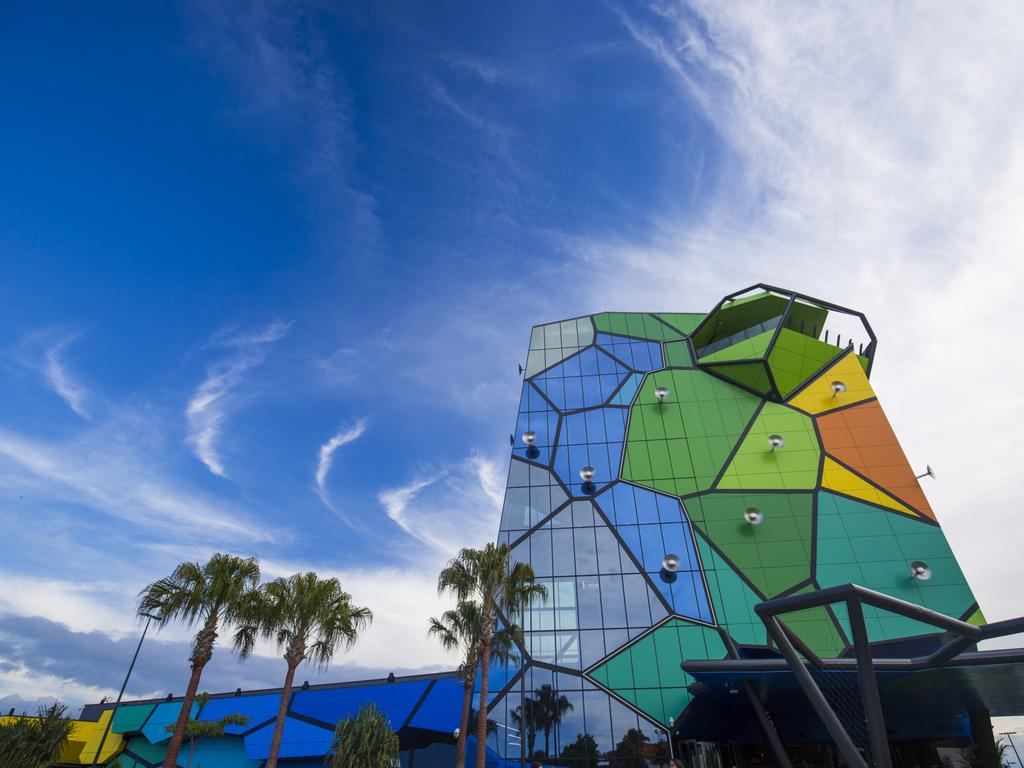
To join the conversation, please log in. Don't have an account? Register
Join the conversation, you are commenting as Logout